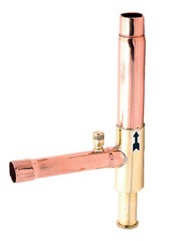Q: What does a crankcase pressure regulator do?
Crankcase pressure regulating valves (CPRs) regulate the downstream pressure to a maximum value. These are commonly installed in the suction line ahead of the
compressor to limit the inlet pressure to the compressor. Limiting the inlet pressure prevents the compressor from “stalling” during start-up if the compressor is over loaded.
CPRs are also used in other applications such as two valve flooding systems to maintain a minimum head pressure. In this application the CPR has a higher pressure range and is used to pressurize the receiver to maintain liquid pressure.
Q: How do I set the CPR?
To limit the pressure entering the compressor, obtain the compressor manufacturer ’s specification for the maximum allowable suction pressure for the refrigerant and temperature. Using a low pressure gage, set the valve several pounds lower than the maximum pressure. An alternate method is to use an ammeter while opening the valve to a set-point which does not exceed the maximum amp rating for the compressor.
Q: How do I set the valve for a flooding application?
The valve should be set to maintain the minimum liquid pressure to prevent “flash” gas in the liquid line and to maintain proper feeding of the expansion valves. This setting should be approximately 10 psig lower than the flooding hold-back valve.
Disclaimer: The information provided within this publication / eBook/ content is for general informational purposes only. While we try to keep the information up-to-date and correct, there are no representations or warranties, express or implied, about the completeness, accuracy, reliability, suitability or availability with respect to the information, products, services, or related graphics contained in this publication / eBook/ content for any purpose. Any use of this information is at your own risk.
 Youth
Youth
 Women
Women
 Research for Ishrae
Research for Ishrae







